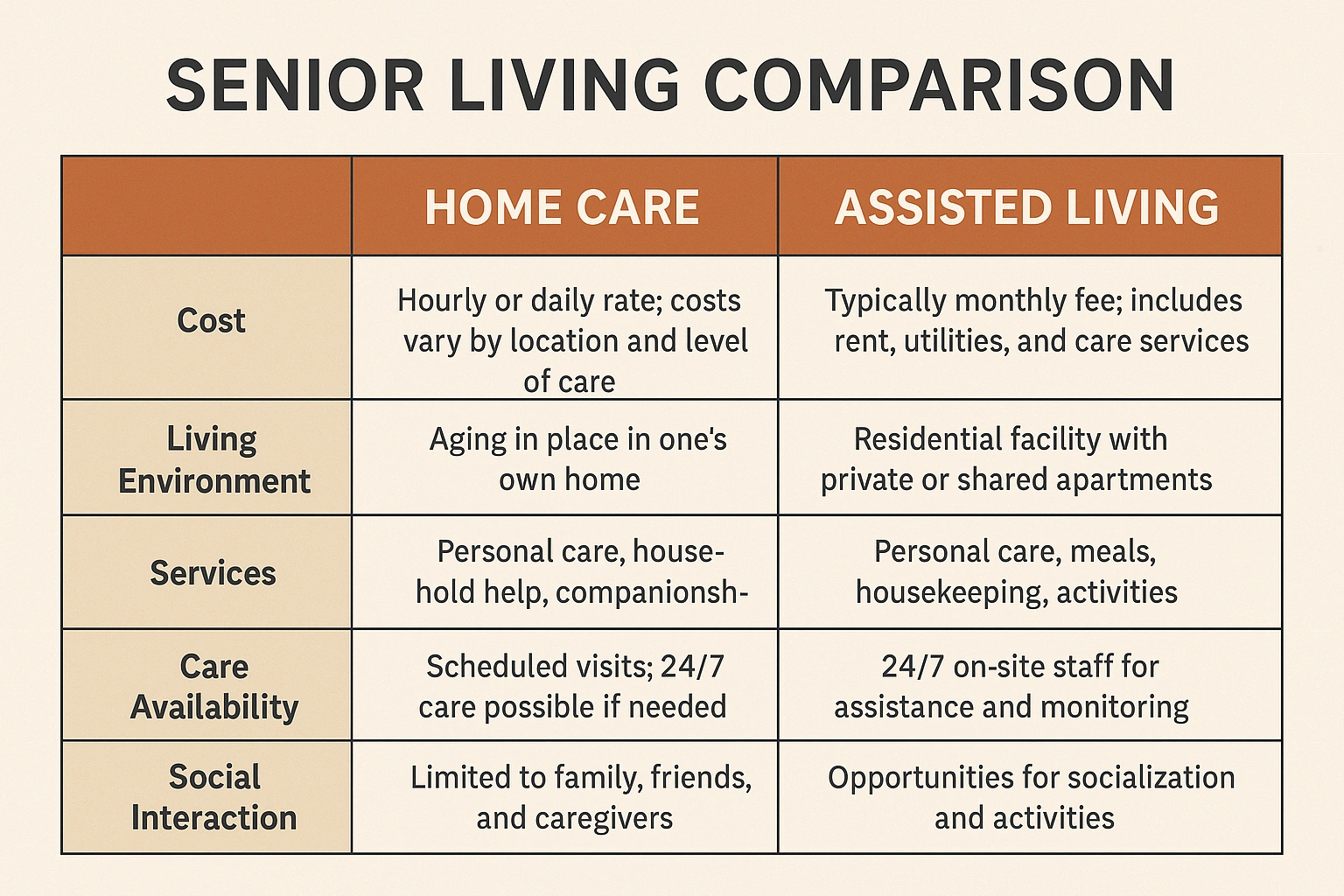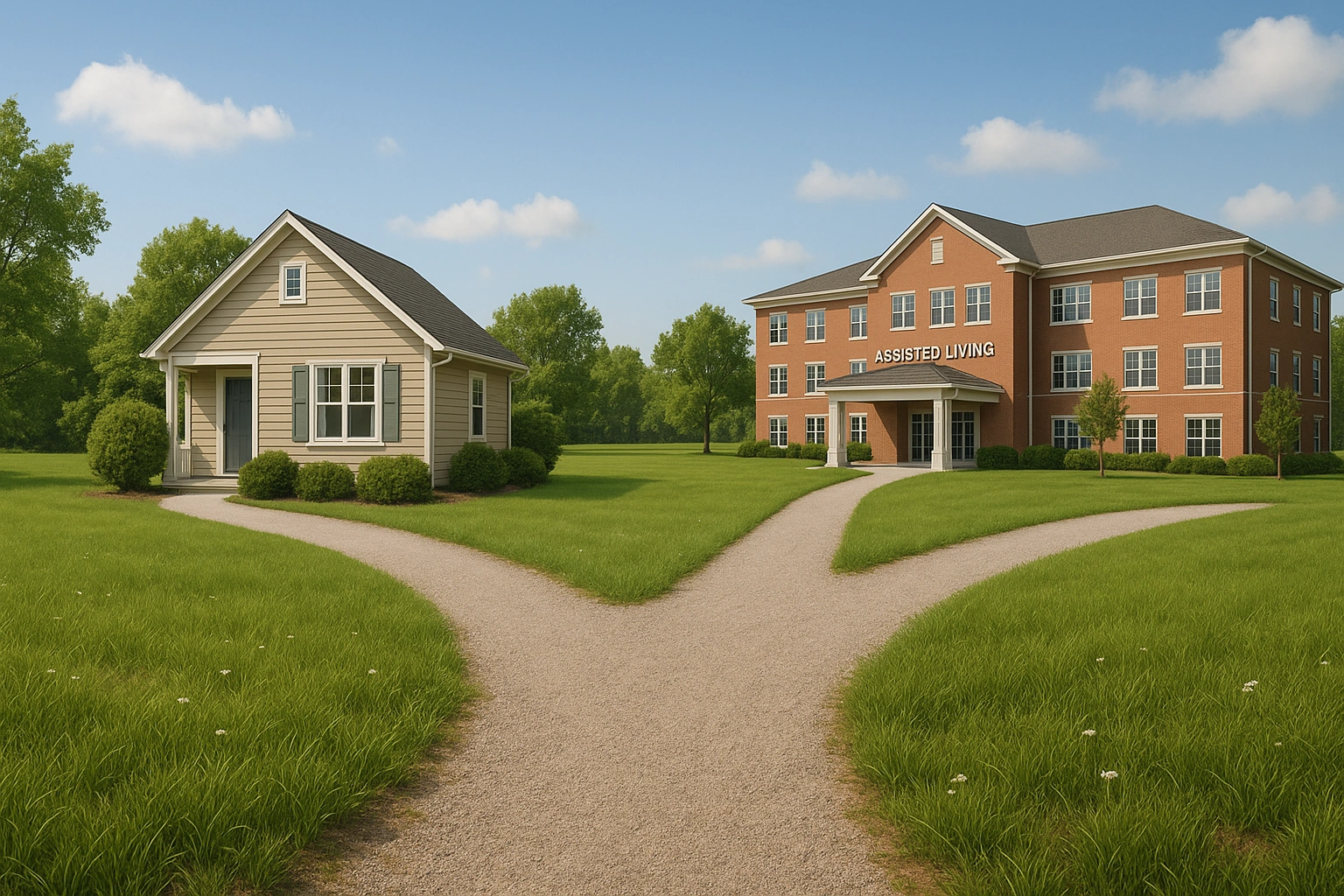Elderly Home Care Assisted
The Crossroads of Care: A Decision Every Family Faces
The conversation often starts quietly. “Mom seems lonely,” or “Dad struggles with the stairs.” Suddenly, your family faces a big decision. Choosing elderly home care assisted is more than logistics; it balances independence, safety, and quality of life. Comparing elderly home care assisted with assisted living helps you see the differences in care, cost, and daily support. Understanding elderly home care assisted allows you to provide personalized help at home while maintaining comfort. With the right perspective on elderly home care assisted, you can make a confident choice that truly meets your loved one’s needs.
Defining the Two Paths of Senior Care
Before comparing options, it’s important to understand the differences between elderly home care assisted and other care models. Elderly home care assisted focuses on personalized support at home, while assisted living offers a community-based approach. Recognizing how elderly home care assisted works helps families match services to their loved one’s needs. By understanding elderly home care assisted, you can make informed decisions that prioritize comfort, safety, and independence.
- Elderly Home Care: This involves a professional caregiver coming to the senior’s own home to provide one-on-one assistance. Services can range from a few hours a week of companionship and help with errands to 24/7 medical and personal care. The key principle is bringing care *to* the individual, allowing them to remain in a familiar environment.
- Assisted Living: This is a residential community setting that combines housing, support services, and healthcare as needed. Seniors live in their own apartments or rooms but have access to communal dining, social activities, and on-site staff to help with daily living activities like bathing, dressing, and medication management. The key principle is moving *to* a supportive environment.
According to AARP, nearly 90% of seniors want to stay in their own homes as they age—a concept known as “aging in place.” This powerful preference drives the demand for home care, while the need for community and built-in support fuels the growth of assisted living.

Why This Decision is So Important
Choosing the right option means understanding how elderly home care assisted differs from other choices. Elderly home care assisted can provide personalized support while staying at home, offering comfort and familiarity. Considering elderly home care assisted allows families to match care with individual needs and routines. By exploring elderly home care assisted thoroughly, you ensure a decision that supports safety, independence, and overall well-being.
Impact on Independence and Autonomy
This is often the central issue. Home care maximizes independence by keeping the senior in a familiar setting where they control their own schedule and space. Assisted living, while still promoting autonomy, involves a move to a new environment with a more structured (though flexible) community schedule.
Financial Considerations and Long-Term Costs
The financial models are vastly different. Home care is typically paid by the hour, making it potentially more affordable for those needing limited help. Assisted living usually has a monthly, all-inclusive fee. A crucial part of this **senior living comparison** is projecting future needs to determine which model is more cost-effective over the long term.
Social Well-being and Mental Health
Loneliness is a serious health risk for seniors. Assisted living provides a built-in community, which can be a lifeline for an isolated individual. Home care offers dedicated one-on-one companionship, but it can’t replace a community of peers. The right choice often hinges on the senior’s personality and current social life.
A well-managed farm requires careful consideration of the environment for each animal to thrive. Similarly, choosing the right living situation for a senior is about creating an environment that best supports their well-being. For insights into strategic planning, you can review resources like this guide on farm management.
Head-to-Head Comparison: A Detailed Breakdown
Let’s dissect the core features of each option to help you see the differences more clearly.
| Feature | Elderly Home Care | Assisted Living |
|---|---|---|
| Environment | Senior’s own familiar home and neighborhood. | Private apartment or room within a larger community. |
| Care Structure | One-on-one personalized care from a dedicated caregiver. | Care from on-site staff available 24/7 to all residents. |
| Socialization | Limited to caregiver and visitors; requires external effort. | Built-in community, planned activities, communal dining. |
| Cost Structure | Pay-by-the-hour; cost varies based on hours needed. | Monthly fee, often all-inclusive of rent, meals, and basic care. |
| Best For | Seniors who want to remain in their home, need one-on-one attention, and have a strong local support system. | Seniors who are isolated, would benefit from community, and no longer wish to manage a household. |

Real-Life Scenarios: Two Siblings, Two Choices
Meet Arthur: Arthur is 82 and recently lost his wife. While physically healthy, he became withdrawn and lonely in his large, empty house. His children worried about his depression. For Arthur, **assisted living** was the perfect fit. He moved into an apartment, made new friends in the dining hall, and joined a weekly card game. The community environment revitalized him.
Meet Eleanor: Eleanor is 85 and has lived in her home for 50 years. She has mobility issues but is sharp as a tack and deeply connected to her neighbors and garden. The thought of moving was devastating to her. For Eleanor, **home care** was the answer. A caregiver visits for 4 hours each day to help with bathing, meals, and light housekeeping. This support allows Eleanor to stay in her beloved home, surrounded by her memories and community.

7 Common Mistakes When Choosing
Navigating this decision is tricky. Avoid these common pitfalls to ensure a better outcome.
- Waiting for a Crisis: Making a decision after a fall or hospitalization leads to rushed choices based on availability, not suitability.
Fix: Start researching and touring options *before* they are urgently needed. Have the conversation early.
- Ignoring the Senior’s Input: A decision made *for* a senior instead of *with* them is likely to fail.
Fix: Involve your loved one in every step of the process. Frame it as a collaborative plan to support their goals.
- Underestimating Future Needs: Choosing home care for a senior with a progressive illness without considering their future needs can lead to a difficult second move later on.
Fix: Be realistic about their health trajectory. If needs are expected to increase significantly, look for an assisted living facility with a continuum of care.
- Focusing Only on Cost: The cheapest option is not always the best value. Poor care can lead to health complications and higher costs down the line.
Fix: Prioritize quality of care, staff-to-resident ratios, and caregiver training over the base price.
- Skipping the “Drop-In” Test: Relying solely on a scheduled, curated tour of an assisted living facility can be misleading.
Fix: Visit the facility unannounced at different times of day, like during a meal, to observe the real atmosphere and staff interactions.
Expert Tips for Making the Right Choice
Use these professional insights to guide your decision-making process.
- Conduct a Thorough Needs Assessment: Before looking at options, create a detailed list of your loved one’s needs, covering medical, physical, social, and emotional aspects. This becomes your scorecard for evaluating options.
- Ask About Staff Turnover: “High staff turnover at an agency or facility is a major red flag,” says a geriatric care manager. “It often points to poor management and can result in inconsistent care. Always ask for their turnover rate.”
- Read the Fine Print: In assisted living contracts, understand exactly what the base rate includes and what services are extra. For home care, understand the agency’s policy on substitute caregivers and holidays.
- Trust Your Gut: During tours and interviews, pay attention to your intuition. Does the environment feel warm and welcoming? Are the staff and residents engaged and happy? This feeling is often more telling than a glossy brochure.
Frequently Asked Questions (FAQ)
Which option is generally more expensive, home care or assisted living?
It depends entirely on the number of care hours needed. For someone who only requires a few hours of help per day, home care is almost always more affordable. However, once a senior needs 24/7 supervision or extensive daily care, the cost of round-the-clock home care can exceed the all-inclusive cost of an assisted living facility.
Can a person with dementia live at home with home care?
Yes, especially in the early to moderate stages of dementia. Many home care agencies have caregivers specifically trained in dementia care who can provide companionship, ensure safety, and help with daily routines. However, as the disease progresses, the need for a secure environment and specialized 24/7 supervision might make a dedicated memory care unit within an assisted living facility a safer option.
How does socialization differ between home care and assisted living?
Assisted living is designed for socialization, with communal dining, planned activities, and easy access to peers. It’s ideal for seniors who are lonely or isolated. With home care, socialization is more limited to the caregiver and any visitors. While caregivers provide excellent companionship, they can’t replace a community of peers. Families often need to make an extra effort to arrange social outings.
What happens if my parent’s health declines in assisted living?
Most assisted living facilities can accommodate increasing care needs, often by adding services for a higher fee. However, if a resident’s needs exceed what the facility is licensed to provide (e.g., they require complex medical care), they may need to transition to a skilled nursing facility. It’s important to ask about a facility’s ‘aging in place’ policies before moving in.
Can I use long-term care insurance for both home care and assisted living?
Yes, most modern long-term care insurance policies cover both types of care. However, the specifics depend on your policy. It will outline the daily benefit amount, lifetime maximum, and the criteria a provider must meet to be covered. Always review your policy and speak with your insurance provider to confirm benefits before starting care.
Conclusion: A Decision of the Heart, Guided by Facts
The debate of elderly home care assisted versus other care options has no single right answer. Choosing the right elderly home care assisted arrangement depends on your loved one’s unique needs, personality, and financial situation. Elderly home care assisted provides the comfort of familiar surroundings and personalized attention, while assisted living offers community engagement and relief from household responsibilities. By carefully evaluating your options and understanding the benefits of elderly home care assisted, you can make a choice that ensures safety, well-being, and peace of mind for your loved one.
This is a decision rooted in love and the desire for the best possible quality of life for your parent. Trust your research, trust your instincts, and most importantly, trust the collaborative process with your loved one. For further guidance, the National Institute on Aging offers a wealth of unbiased information for families.
